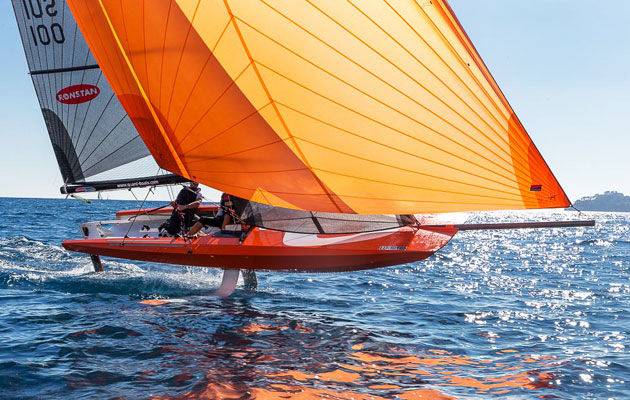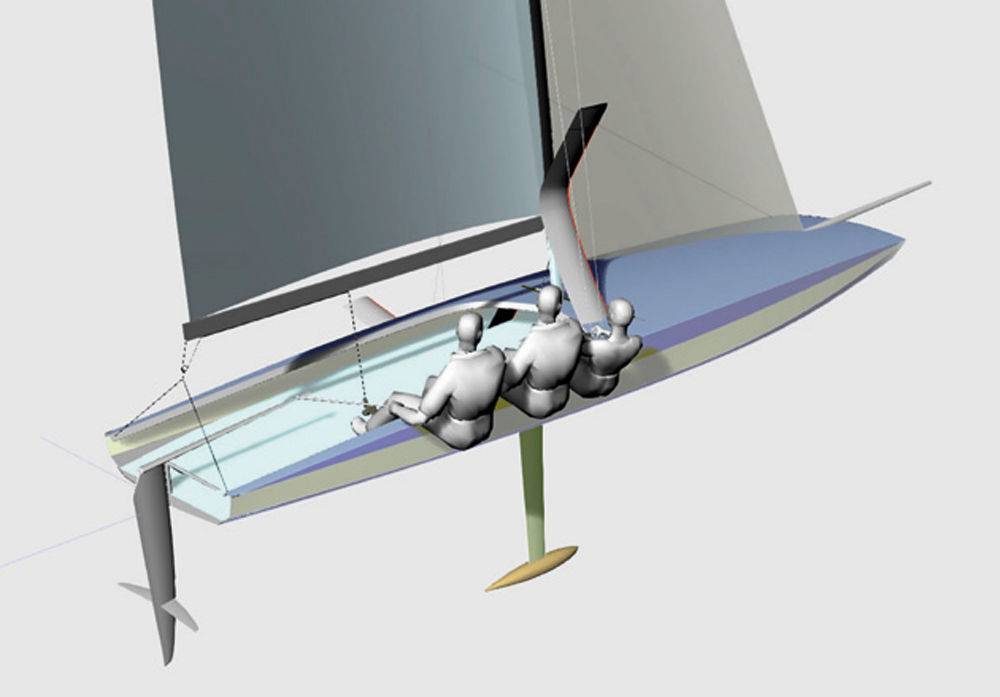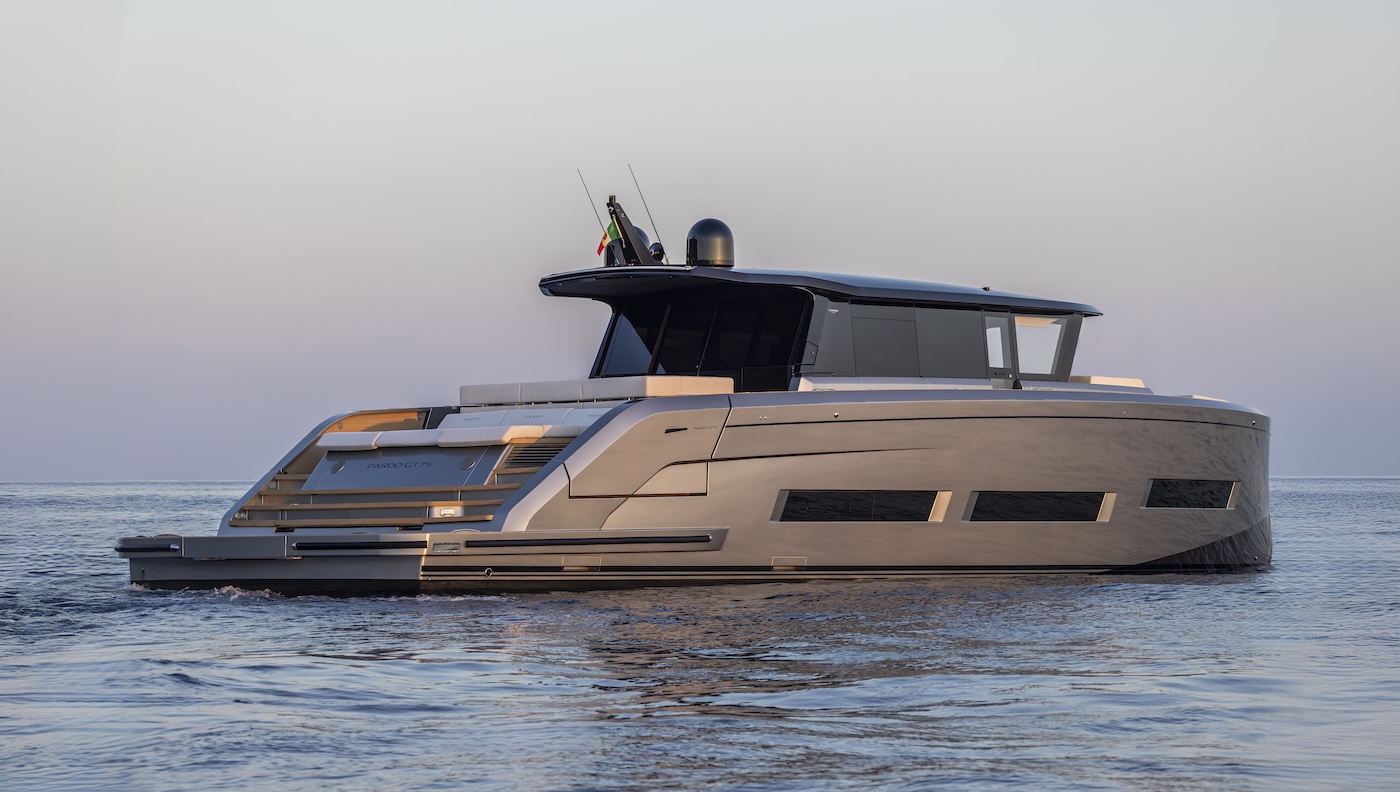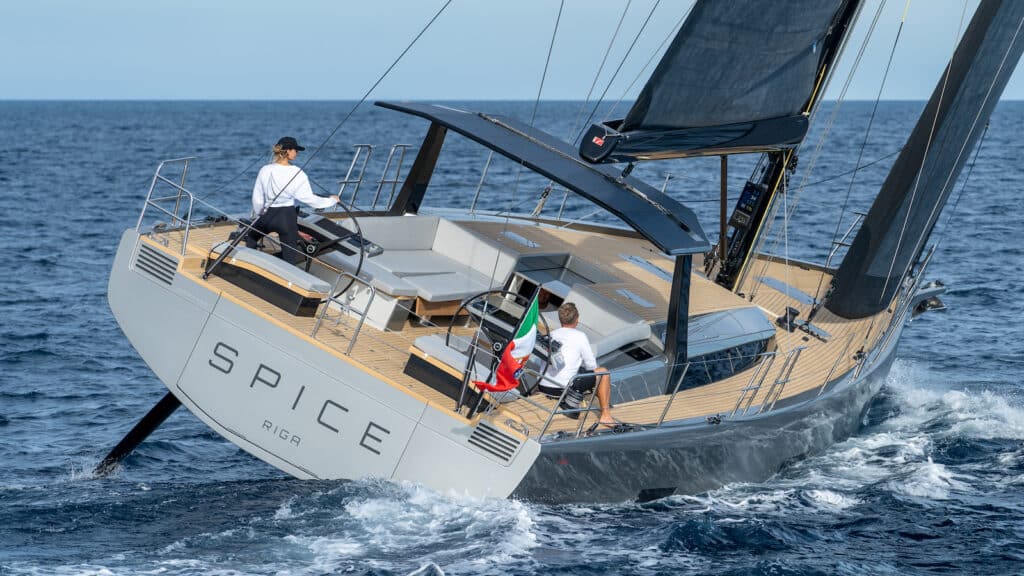Si dice che le barche con i foils siano davvero difficili da condurre. Tutto sommato volano sull’acqua sostenute da un vero e proprio profilo alare immerso che, come succede agli aeroplani, quando aumenta la velocità crea portanza e fa “decollare” la barca.
Molto divertenti e veloci, gli scafi con queste appendici non sono una novità. Già alla fine degli anni’90 i foils hanno fatto la loro apparizione sul trimarano Orma 60 dando il via a un processo di evoluzione che li ha portati alle attuali configurazioni su barche estreme come il catamarano di Fly Emirates Team New Zealand.
Barche estreme appunto, molto tecniche, piuttosto instabili e sicuramente al di fuori dell’orizzonte di un comune velista.
E qui sta la ragione del perché Quant 23 rappresenta, a 15 anni dall’uscita dei primi foils, una grande novità: è una barca stabile, capace di perdonare errori che altre barche con i foils non perdonerebbero, alla portata di chiunque abbia un po’ di dimestichezza con scafi veloci e tecnici.
La barca è stata costruita dal cantiere svizzero Quant Boat, ma la paternità del progetto è del designer britannico Hugh Welbourn. Ed è nelle pieghe dei suoi disegni e che sta annidata la ragione di questa eccellente stabilità: si chiama DSS ossia Dynamic Stability System, un sistema elaborato con il collega Gordon Kay. In sostanza si tratta di un’ala, il foil, che può essere estratto o meno a seconda delle condizioni, che genera stabilità e portanza dinamica, ossia in funzione della velocità, sul lato sottovento.
Il foil così concepito, non è frutto di una genialata, ma prende la sua forma attuale dopo cinque anni di test durante i quali è stato provato su barche diversissime, dagli open 40 alle derive di 27 piedi. Anni necessari per mettere a punto il sistema ma anche per capire che funziona sia sulle barche da regata – ad esempio l’ORC lo prevede nei calcoli di stazza – sia sulle barche da crociera.
Certo la grande stabilità del Quant 23 è data anche dalla forma piatta e squadrata dello scafo, con una prua praticamente piatta. La barca non è propriamente bellissima, ma con il Quant 23 ci troviamo nel regno dell’evoluzione in cui, prima del risultato estetico, si cercano le risposte alle sfide tecnologiche e progettuali. Inoltre, la forma piatta dello scafo permette anche di accogliere velisti non particolarmente atletici proprio grazie alla sua grande stabilità: “L’idea di base – ha dichiarato il papà di Quant 23, Hugh Welbourn – è quella che anche Mario Rossi possa salire a bordo senza una particolare preparazione atletica e dieci minuti dopo si ritrovi a volare sull’acqua”.
I due foils del Quant 23 sono molto simili a due lame di deriva che escono in posizione verticale quando non sono immerse. Al lavoro delle due “ali” collabora anche il timone a T rovesciata che dà portanza alla sezione poppiera e permette alla barca letteralmente di volare.
La conduzione è molto semplice perché si può scegliere di navigare senza i foils, quindi completamente sollevati, oppure con i foils in acqua, dove i test hanno permesso di verificare che già con otto nodi di vento cominciano a rendere dando portanza e sollevando lo scafo dall’acqua. La velocità registrata con dieci nodi d’aria si è collocata fra i 16 e i 18 nodi. Non male.
Scheda tecnica:
Lunghezza Ft 7.00 mt
Larghezza 1.90 mt
Pescaggio 1.65 mt
Superficie velica:
Bolina, 32 metri quadri
Poppa, 60 metri quadri












